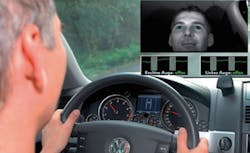Internet of Things applications like wearable smart glasses and smart home thermostats may grab popular headlines, but smart machines being developed for industrial uses are what will change the world economy more than anything else since the Industrial Revolution. We’ve all heard the numbers: According to research from Cisco, GE, and Intel, there will be a $4 trillion global opportunity across industry over the next 10 years arising from the reduced costs, increased efficiency, and new value creation through the application of Industrial Internet of Things (IIoT) technologies.
The CT scanner controller uses dozens of processors for precision control and data processing. It coordinates the gantry, patient heartbeat, emitter, and scanner. A high-speed bus collects the results and processes them into a 3D image.
But according to an RTI (Real Time Innovations) white paper, this growth can only be realized if a standard protocol of communication can be developed to connect the real-world applications that will exist within the IIoT.
Control Editor in Chief Paul Studebacker concurs in his blog discussing the benefits of a common language, “Today, thanks to Internet protocol, Ethernet, OPC and a massive collection of standards and adaptors, end users can find ways to construct the reliable, deterministic, secure wired and wireless networks they need, but it’s still harder than it should be. And it won’t get easier as we integrate the massive amount of new technologies brought about by the Industrial Internet of Things (IIoT).”
RTI thinks this common language has been accomplished with the Data Distribution Service (DDS) middleware protocol standard. Managed by the Object Management Group (OMG), the DDS seems to fill all the requirements of a robust standard protocol. DDS middleware is specifically designed to handle Industrial Internet applications. And RTI’s white paper, “DDS: the Right Middleware for the Industrial Internet of Things,” provides examples of current applications of the software and how DDS can connect and integrate with complex application systems across industries like medicine, energy, and transportation.
Volkswagen’s driver assistance and integrated safety system uses Connext DDS to combine radars, laser range finders and video to assist safe operation. It tracks the driver’s eyes to detect drowsiness. It also detects lane departures, avoids collisions and helps keep the car in its lane.
According to RTI, an implementer of the OMG DDS standard and a member of OMG’s Industrial Internet Consortium (IIC), “DDS is not like other middleware. It features extensive fine control of real-time quality of service (QoS) parameters, including reliability, bandwidth control, delivery deadlines, liveliness status, resource limits and security.” DDS explicitly manages the communications data model, or types used to communicate between endpoints. It is like a database that provides data-centric storage, DDS understands the contents of the information it manages. In fact, RTI calls DDS a “DataBus.”
To give a better understanding of what DDS is and how it works, RTS breaks down how the middleware protocol is currently being used across multiple industries. One use case describes how industrial-strength data sharing can improve power generation and distribution, monitor and optimize use, and even power new business models and energy business systems.
Siemens Wind Power fields farms of 500 turbines with over 100 million blades. RTI Connext DDS enables fast control within turbines and distributed gust mitigation across the array.
In a Siemens Wind Power farm, “Modern wind turbines have blades that sweep a 120 meter circle, cost more than one million dollars, and generate multiple megawatts of power. Each turbine may include up to 1000 sensors and actuators, integrating strain gages, bearing monitors and power conditioning technology.”
“The real challenge is integrating turbines together,” the paper continues. “With DDS, a Siemens Wind Power farm is a smart, distributed machine. It optimizes power. It monitors its own health. It reacts to its environment. It epitomizes the power of the Industrial Internet of Things.”
Other energy use cases include the GC Dam and Canada’s LocalGrid microgrids. A healthcare use case from GE, and NAV Canada air traffic control and Volkswagen smart cars are also reviewed.
As Studebaker described in his blog, the future of the IIoT depends on the application of a standard protocol capable of integrating vast amounts of information across multiple industries absolutely seamlessly. RTI argues that DDS is right for the IIoT because DDS “provides both the extreme capabilities required by intelligent machines and the needed integration to extend to cloud-based analytics and optimization.”
With proper acceptance of DDS, perhaps the next Industrial Revolution will be closer than we thought.
You can find this and other white papers on the Industrial Internet of Things in the Smart Industry Content Library.







